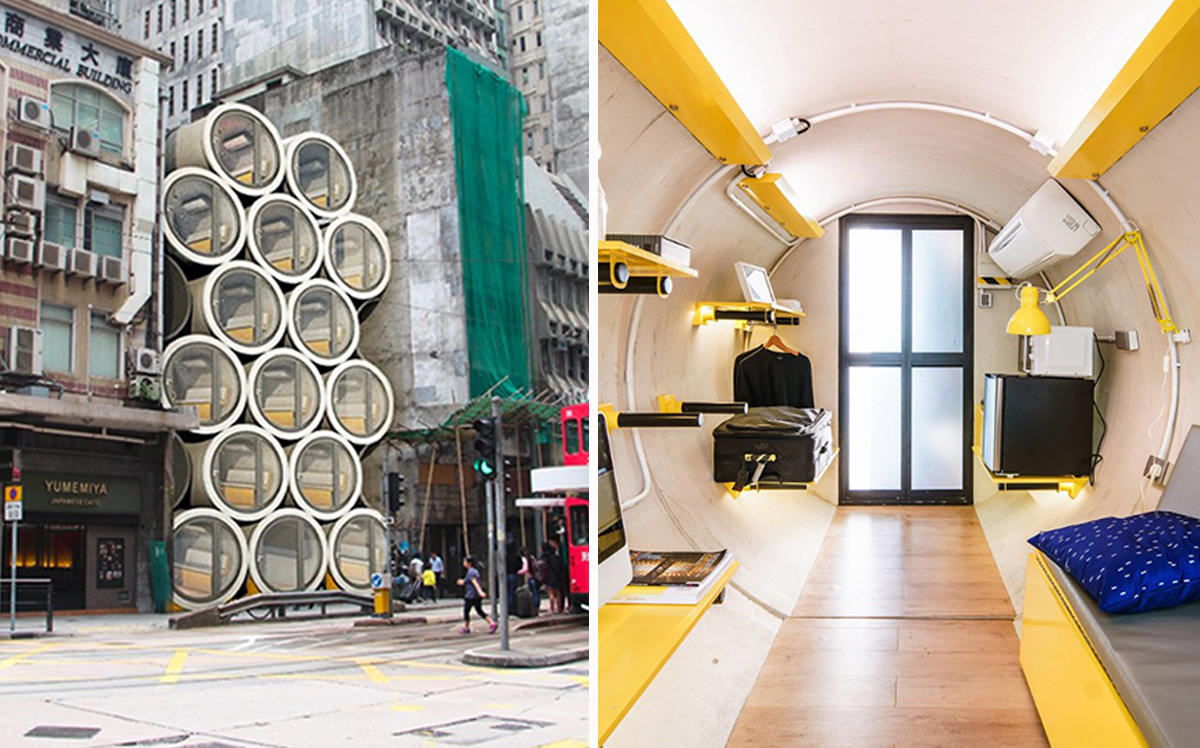Hong Kong may be in a state of unrest, but a local design firm is seeking to mitigate the city’s housing crisis with concrete pipes rebuilt as stackable apartments.
James Law Cybertecture is seeking city approval to offer micro apartments made from concrete water pipes, called OPod Tube Housing. The firm has built a prototype for its tiny home approach by transforming a pipe that is 2.5 meters wide, or a little more than eight feet, into an apartment that spans 9.29 square meters, or about 30 square feet.
Interior features include curvy whitewashed walls and a flat wooden floor. The front panel on the model unit is fully glazed and serves as both a window and a door that residents can unlock with smartphones. A bench seat doubling as a bed, a mini-refrigerator and a microwave oven also would fit into the micro apartment. Complete with a toilet and shower, the white-tile bathroom in the rear of the OPod unit is screened off, with the entire apartment able to be loaded onto a truck with a crane.
James Law Cybertecture is negotiating with Hong Kong’s government, currently coping with public protests calling for the city’s leader to resign, for clearance to install and rent OPod apartments. Founder James Law sees his portable units as residences that could have up to four stacked atop one another at undeveloped in-fill sites between existing buildings in vacant locations across Hong Kong.
Law told design publication Dezeen that it would cost about £11,000 to manufacture each OPod apartment, which tenants could rent for less than £300 a month. He also said the experimental tiny-apartment design would appeal to “young people who can’t afford private housing,” noting that the typical tenant would probably reside for a year or two in an OPod unit before moving.
The average rent for a one-bedroom apartment in the heart of Hong Kong exceeds £1,500. The city has been ranked as having one of the least affordable housing markets in the world. Hong Kong’s severe scarcity of housing is rooted in population growth, soaring real estate prices and limited land availability due to its island geography.
Other architects in Hong Kong have suggested solutions to the city’s housing shortage that focus on compact residential units. In 2014, a Hong Kong studio called Affect-T floated the idea of installing bamboo micro homes inside vacant factories.
More recently, Design Eight Five Two made a 52-square-meter apartment more comfortable with concealed storage space, easy-to-move furniture and sliding partitions, while another local studio, NCDA, created a 34-square-meter apartment roomier by installing a mezzanine with a treehouse-style design. [Dezeen] – Mike Seemuth
